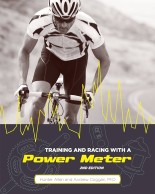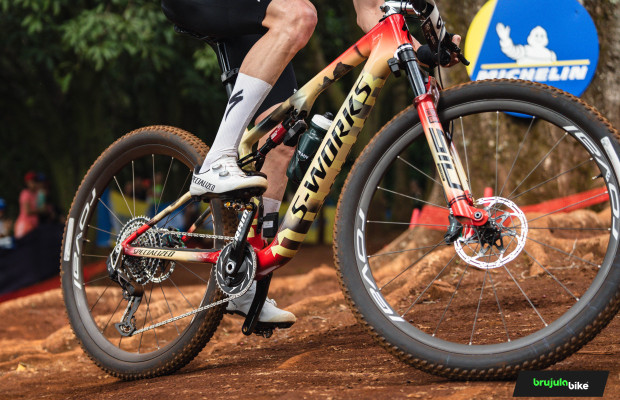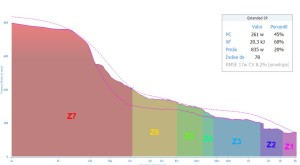What is Critical Power in cycling? Can it be an alternative to FTP?
The paradigms of power training have been evolving as physiologists better understand the functioning of the human body and its relationship with sports performance. In addition to the traditional use of FTP as a reference for using watts, other models are now being added to overcome the limitations of the usual reference. The most common is the critical power model.
Manage your energy better using Critical Power
Although power meters have been around since the 1980s, it wasn't until the normalization of their use at the end of the first decade of this century that models to understand the body's response to different powers and apply that data most efficiently to training began to appear.
In 2006, the book Training and Racing with a Powermeter by Dr. Andy Coggan and Hunter Allen was published, laying out all of this and creating a power training paradigm that, with small additions and modifications, remains to this day.

RECOMENDADO

Tips for cycling in the rain

25 cycling gifts ideas to get it right

When do helmets have to be changed? Do they have an expiration date?

Some reasons to stay away from the road in winter

S-Works: what does it really mean and where does Specialized's most exclusive label come from?

The best apps for cycling and mountain biking
This publication defined the concept of Functional Threshold Power, or FTP, around which everything revolved and was defined as the maximum power a cyclist can sustain during a constant effort of one hour. This data would be equivalent in its use to the Anaerobic Threshold traditionally used in heart rate training, and it defined the different power-referenced training zones.
A simple and easy-to-understand model that has been enriched over the years with contributions, for example, from Joel Friel, who created a series of effort metrics that are widely used by coaches today to quantify the applied load and the fatigue it generates in the body.
However, the FTP model has limitations when it comes to high-intensity efforts, not quantifying how long a cyclist can sustain 'all-out' efforts in the best possible way. In fact, it was not uncommon for coaches to ignore the FTP when prescribing high-intensity training and instead use the value of shorter test as a reference. It also does not take into account the different profiles of cyclists, where an endurance cyclist, capable of sustaining efforts for a long time, is not the same as a sprinter who can maintain efforts well above the limit for an unreachable time for most mortals.

Critical Power is defined as the maximum power a cyclist can sustain for a sufficiently long time, which is usually set at around 30 or 40 minutes. Physiologically, this figure would have a similar meaning to FTP, in fact, some authors equate it and use the data obtained from a 30-minute test directly as FTP instead of the traditional 20-minute test with a correction factor applied. However, as a rule, Critical Power is usually quantified as around 96% of FTP.
Just like with FTP, we could establish work zones based on this value. However, the methodology here is different. There is another value called W' that establishes the maximum amount of work, measured in kilojoules, that we can perform above critical power before reaching exhaustion.
This way, we have a relationship between our aerobic capacities, defined by CP, and our anaerobic capacities, represented in W'. Obviously, working with this model requires us to consider another piece of data when looking at the cycling computer, kilojoules. This amount that we can sustain above Critical Power would be, in simple terms, like the energy bar in a video game that depletes faster when pedaling at higher intensities and refills when pedaling below CP.

Knowing the rate at which this energy bar depletes at each power level, which is modeled in a power curve once we calculate Critical Power and W', we will be able to know at what power level we should do intervals of a certain time, knowing how many intervals we are going to perform or, at a more practical level, knowing at what maximum power we can ascend a climb that we know takes a certain time to ascend.
In fact, there are even applications for our cycling computer that allow us to enter the CP and W' parameters, or even calculate them based on our activities. In fact, the latest Garmin models are already capable of doing this, and they show us graphically the mentioned energy bar and the time we can sustain the watts we are generating at that moment.
We only need to calculate Critical Power and W', which, unlike calculating FTP, the use of the 20-minute test has been standardized. In the case of CP, there is no clearly defined protocol. In general, it involves doing a series of tests of different durations so that the body's response to different intensities is taken into account. One of the most common protocols is to do a 3-minute test and a 12-minute test, after which we apply a series of formulas to obtain the values of CP and W'. However, it is also common, for greater precision, to add more tests, for example, one of 20 or 30 minutes. When calculating these data, we don't have to go crazy with the formulas because there are plenty of online calculators that integrate these and with which we only have to enter the results of our tests to obtain the values of CP and W'.

Despite the greater precision added by the Critical Power model, the FTP model remains fully valid and is also simpler to interpret and apply by the cyclist. However, if we want to get the most out of our training by adding maximum precision, the Critical Power model has become the choice of the best coaches.